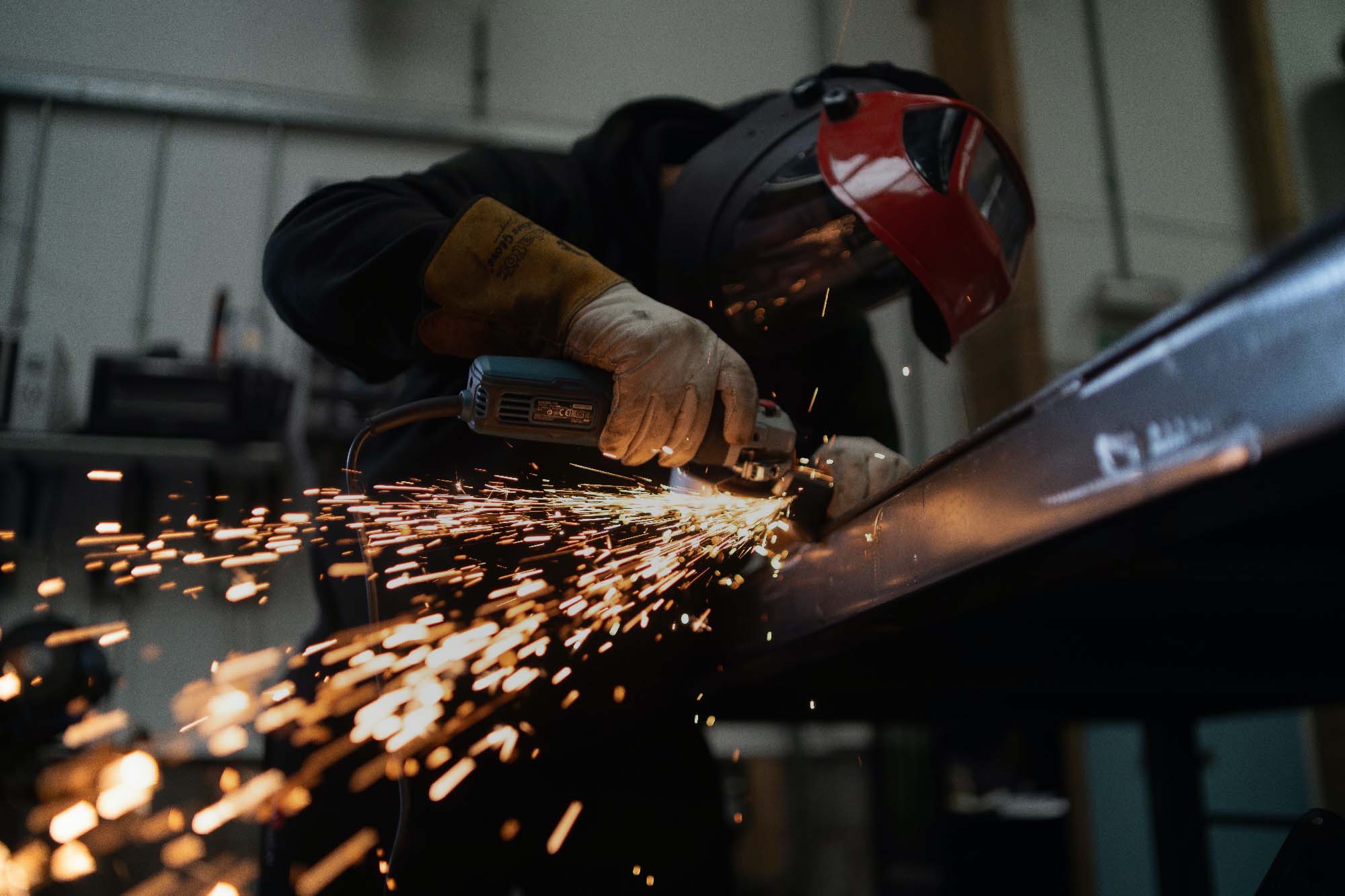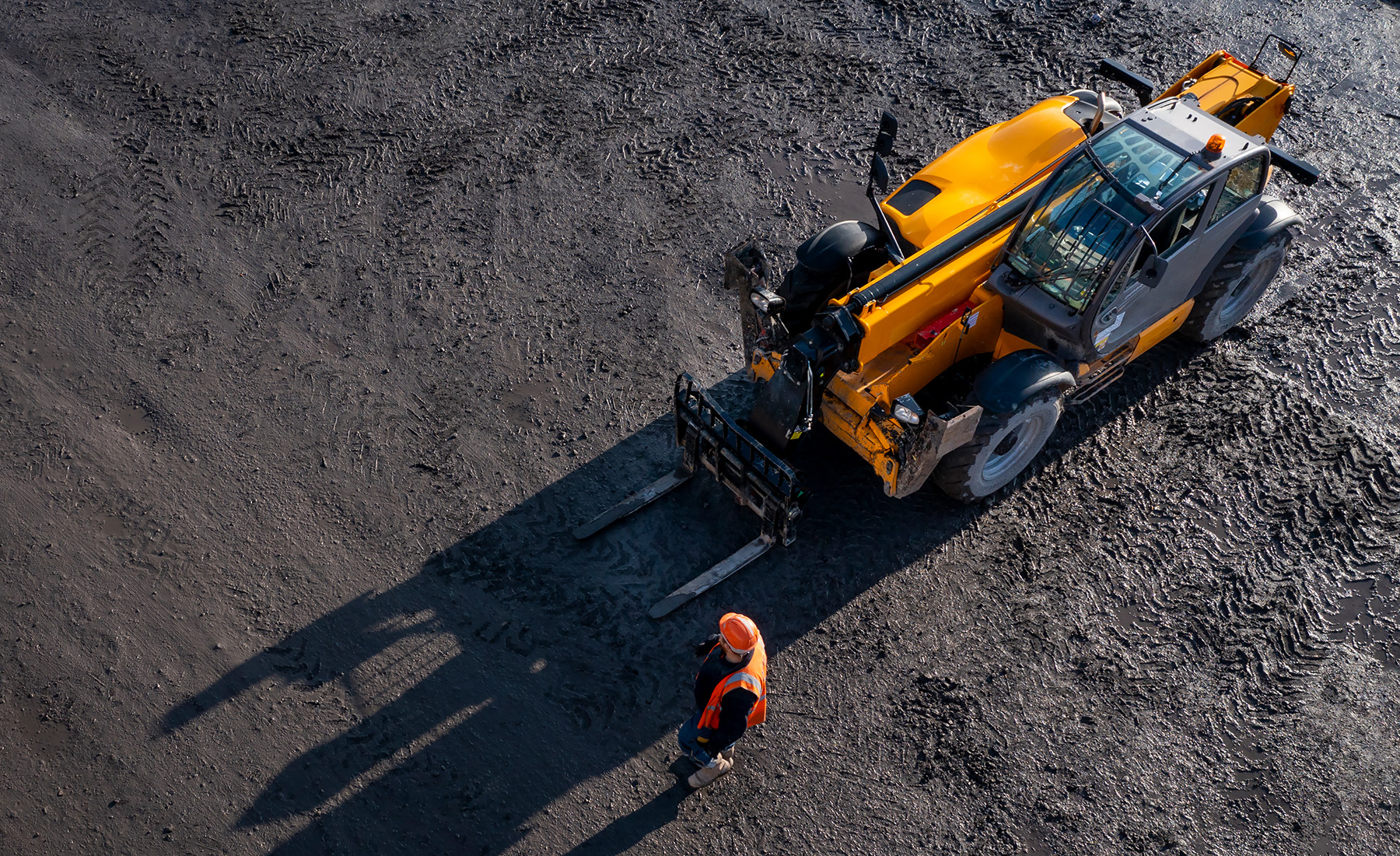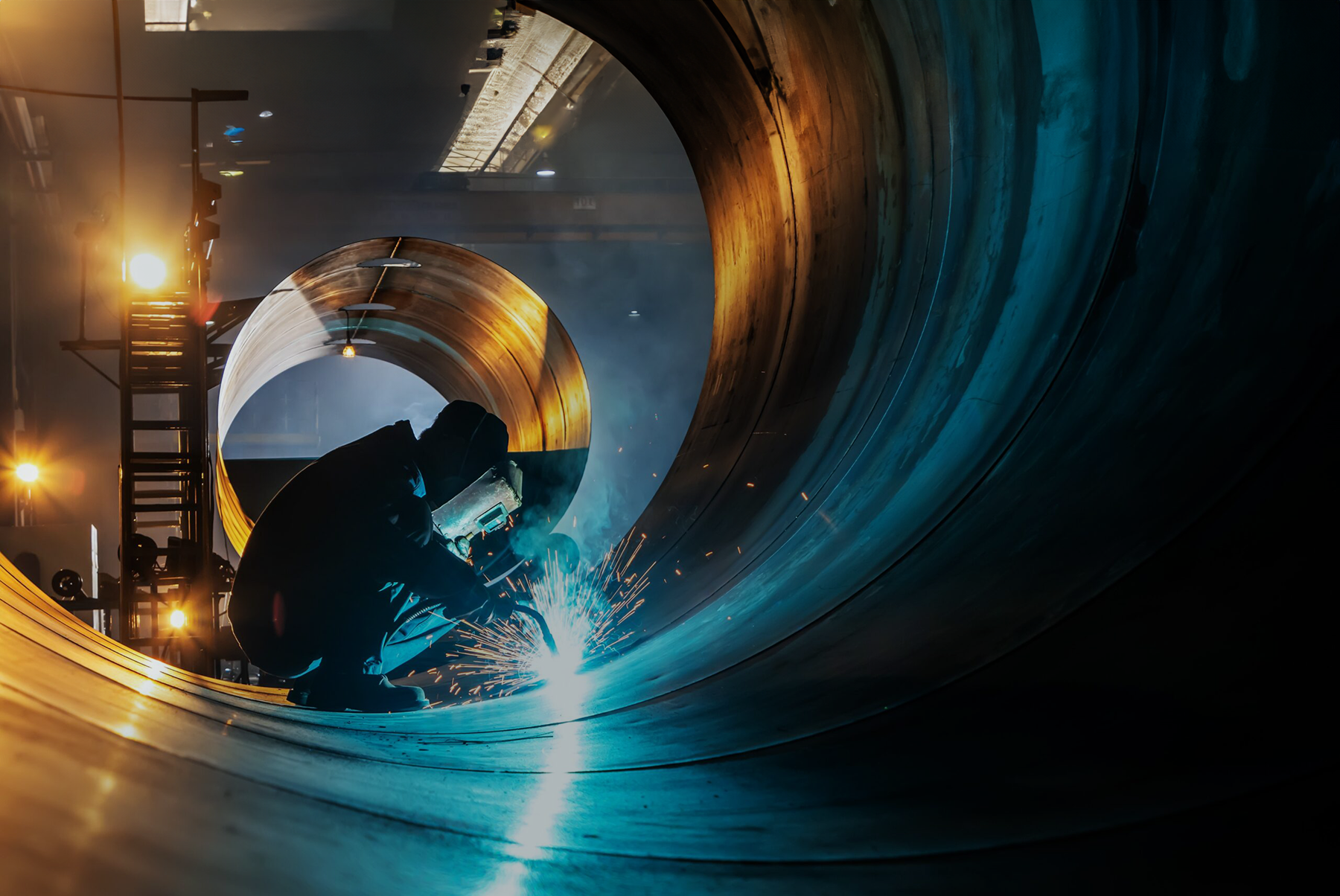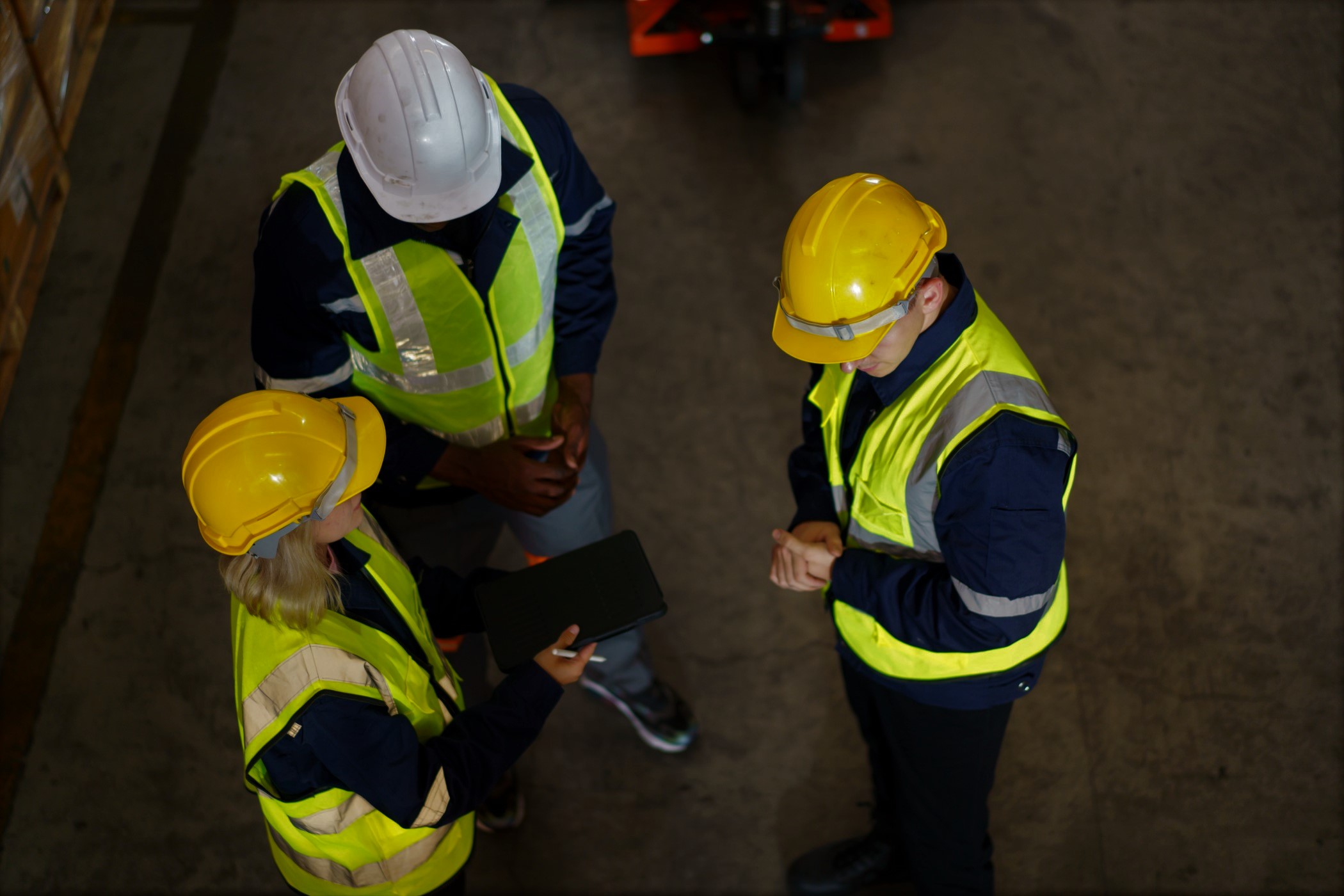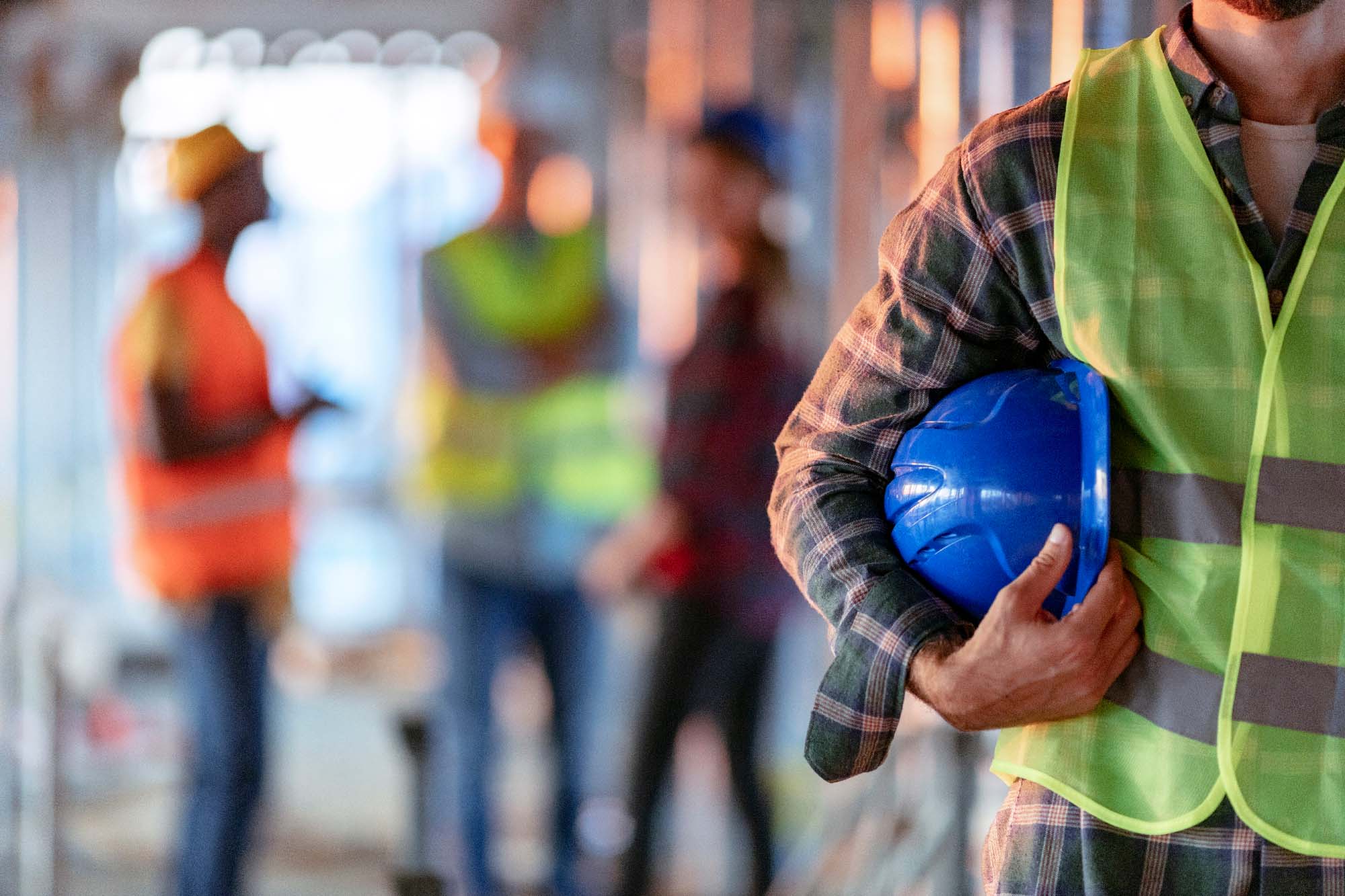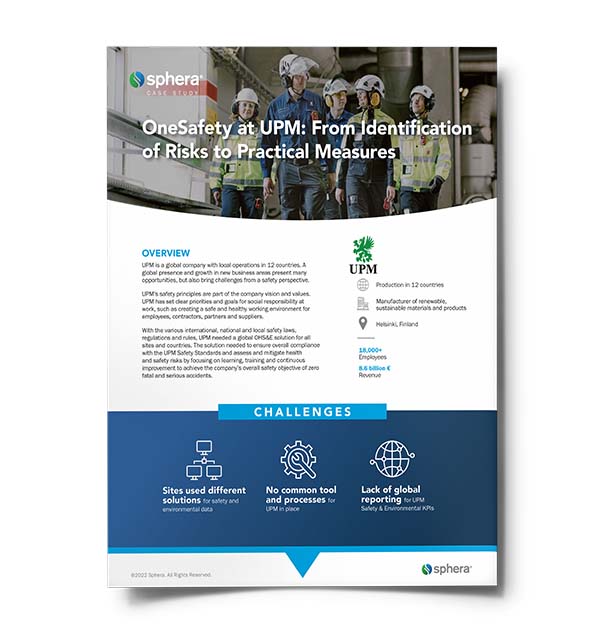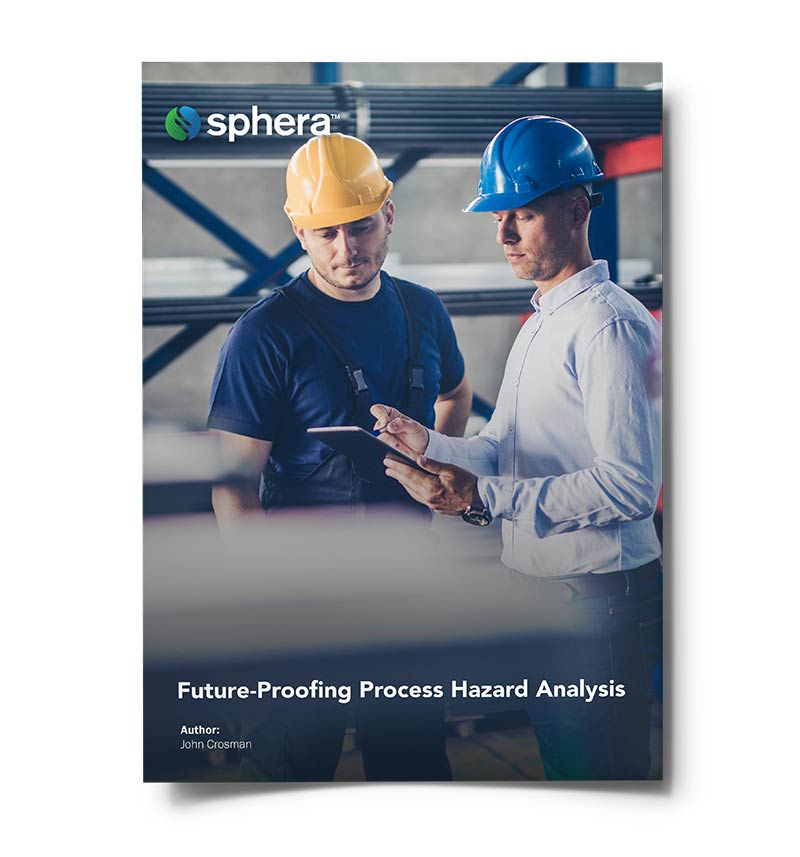In this three-part series, Andy Bartlett, Sphera’s solution consultant for Operational Risk Management, details lessons learned from incidents he has seen during his 40-plus-year career. Listen to parts one, three and four.
The following is an edited transcript of the podcast.
Disclaimer: Some of the content in this interview might be disturbing to sensitive viewers.
Welcome to the Sphera Now podcast. I’m James Tehrani, Spark’s editor in chief. Today on the program, I’ll be speaking with Andy Bartlett, Sphera’s solution consultant for operational risk management. This is part two of what we call Andy’s Almanac on accidents. As a process safety expert, with more than four decades of experience, let’s just say Andy has seen some things. So just a quick recap of our part one. In part one, Andy discussed an explosion at a PVC resin plant back in the 1970s, a leak he noticed in the reactor and his own experience with an incident where his hands were exposed to an alkaline chemical monomer. Thank you so much for joining me today, Andy.
Andy Bartlett: Hi, James. Nice to talk to you again.
James Tehrani: Great, so in part two, I believe we are going to be heading off to Saudi Arabia. So can you tell us a little bit about how you got there and when that was?
Andy Bartlett: Yeah. I arrived in Saudi Arabia on October the 10th, 1977. I had done an interview for the job. I was the person that we’re looking for so they said. When I got there, I found out there was about 50 of us had been hired for the same job, which was to commission gas plants, part of the master class program. We worked a 42-21 shift pattern, which was we worked 21 days, 12 hours. Then, we worked 21 nights, 12 hours. And then, we flew back to the UK and spent 21 days at home with the family. We used to fly out of the old Dharon Airport, on a British Airways 747 on a Sunday morning. That was shift change.
James Tehrani: That sounds grueling.
Andy Bartlett: It was. It was tiring. The first couple of days at home, you weren’t really good for anything.
James Tehrani: A long nap maybe.
Andy Bartlett: Yeah, so when I got into the plant, and I got to know my colleagues, on my shift, there was a Filipino operator, two Indian operators, a Pakistani operator, two USA guys as operators and we had a Saudi foreman and Saudi control room operators. So it was quite a mixed bag. Everybody got on grid together. It was really good.
James Tehrani: Was communication ever an issue with all those different languages, or was it all in English?
Andy Bartlett: Was all in English. The radio was in a broken English, Arabic, depending on who they were speaking to. So at break time, we were sitting down one day, and this incident happened at Abqaiq. And one of my Saudi colleagues there was telling me one of his relatives had been burned in the incident. So I looked this up on Marsh this year actually, the Marsh 100 incidents, and it was quite a big incident. One man was killed and 13 others injured. So that was an explosion caused by corrosion, which this is my first introduction to process safety. Obviously, there was corrosion, and it was in the ground that wasn’t being monitored properly or been damaged to the pipe, courting at some time. So as I spent more time in Saudi, I settled into the system, the ways of work. So we had to pay for a Permit to Work system and isolation process that seemed to work fine. We got communicated by the foreman every Monday morning. He would come down and talk to us and tell us what had happened in the company the previous week.
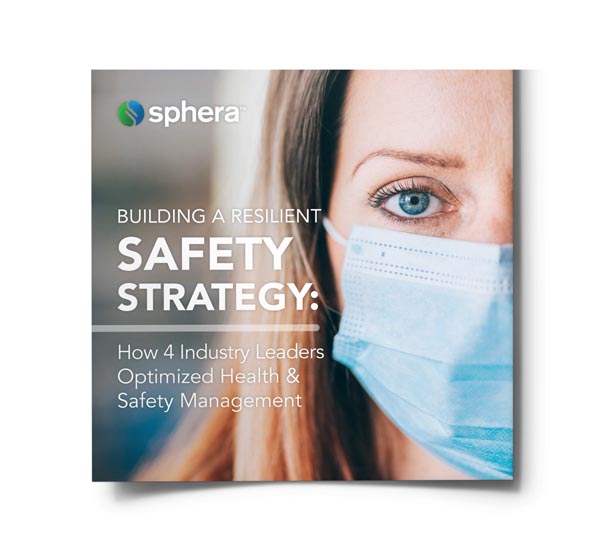
James Tehrani: So is this an older pipeline, or is this a newer pipeline?
Andy Bartlett: Yeah, Abqaiq’s one of the older plants in Saudi Arabia. It’s been there a long time, so there would be stuff that was starting to corrode. Yeah.
James Tehrani: Got it. Okay, go ahead.
Andy Bartlett: Yeah, so I settled into the way of working. The foreman would come each Monday morning and talk to the shift and tell us about what had happened in the company the week before. They had a conference call every Sunday with the management. I then became an avid reader of any bulletins about safety that came out. They had a very good system of distributing lessons learned from incidents. So when I look back at my first year, there’s three incidents of note.
James Tehrani: In the first year?
Andy Bartlett: One of my colleagues was nearly asphyxiated by chlorine gas. He tried to tighten a leaky unit on a small board pipe and sheered the line. He did manage to close the valve on the cylinder before calling for help. I attended, got him into our pickup truck and he was exhaling green gas, was quite nasty really, and I took him to the clinic, and he did recover and came back to work, which was good.
James Tehrani: Did you actually approach him when the chlorine gas was still in the area, or did you see him after that?
Andy Bartlett: No. No. I carried him into the pickup truck while he was exhaling.
James Tehrani: Were you wearing any type of mask or anything like that?
Andy Bartlett: No, didn’t have time for that. He actually turned off the leak, which was the main thing. What was coming out of him was what he’d inhaled.
James Tehrani: That must’ve been so scary to see.
Andy Bartlett: Well, it was. Yeah, and in those days I was young and daft, so I mean, that sort of thing, he didn’t think twice about it, and if the cylinder was still leaking, then yeah, I would have had to go and get a breathing apparatus to window it as it’s closed off, the leak had gone.
James Tehrani: And this person survived the incident.
Andy Bartlett: Oh yeah, he survived. He was there for a few years after that I know of. So the wrong tool for the job. He’d used a pipe wrench, which you can get excessive force instead of a spanner, which you should have called somebody from maintenance. He tried to fix it himself. So most of these incidents, I go back and look at them and say, “Right, if I was going to investigate this today, process safety wise, what would be my root cause?”
James Tehrani: And that wasn’t even on the radar back then, the process safety?
Andy Bartlett: No, no it wasn’t. This is 1977. Yeah. The next incident that I’d remember from then was, we were removing a butane pump, which was a vertical pump in a casing in the ground, and we purged the pumps, or we thought we’d put nitrogen into this purging point. And we’d spent several days, and the flare had gone down. So we knew that there was no more gas coming out. So we thought, okay, it’s good to go. So the maintenance came, they on boarded everything, lifted it out, and as they lifted it out, and it got to ground level, all this liquid butane started pouring out at the pump. And when we looked into the casing, there was liquid butane bubbling away in the bottom of the casing. So we got the truck, got the pump onto the truck, got it out of the way, and we had to just leave it, put a barricade around the area and leave it to flash off. So by the next morning, it was gone.
James Tehrani: Butane is something that you’d use as a fuel, right? Is that where you normally would see butane?
Andy Bartlett: Butane’s one of the natural gases, liquid natural gases. It’s sold for camping, for gas cookers, where they don’t have gas main lines.
James Tehrani: So very flammable.
Andy Bartlett: Oh yeah. Very flammable. Yeah, that was a point you were making, it’s very flammable. So the investigation on that found that the purge line had corroded. It wasn’t gone down into the liquid, and one of the guys was talking, “Oh yeah, we’ve had this problem before. We had to change the line.” And then, across when the engineering got involved in, they found out that they changed the line, and they just put carbon steel, which is not what should have been. It should have been an alloy. So it was replaced with an alloy, so that was a wrong material for the job, was the root cause for that. So management of change, again, was something that people didn’t talk about. So somebody changed the material because they didn’t have the alloy. We’ll put a piece of steel in and that’ll be okay.
James Tehrani: But they’re not scientists, whoever did that.
Andy Bartlett: And the next one is probably the most… That was probably the most dangerous, the butane one. The next one was the most shocking to me. Remember that we came from the UK in the October, and we’d had a week in the training school, but the week in the training school was all about the equipment, where it was, not much on how it all worked. So across compressors, I was familiar with them in the UK. I’d worked with compressors all my life in the chemical plants. So they were taking a compressor to pieces. We’d been isolated in the substation. We’d degassed it, so it was ready for maintenance to work on it. They put blinds in. They were taking the actual compressor head off, and they disconnected the couplings between the motor and the compressor, and around about lunchtime, the compressor motor started.
Andy Bartlett: Luckily, there was nobody near. The flange on the mortar was spinning, and if it hits somebody, it would have hurt them, or if it even got wrapped around it and hurt and killed somebody. But the maintenance guys started to shout at us and say, “Well, no wait, it’s locked out in the substation.” So the maintenance guys we knew as well, and there’s a story behind all of it, why we’re all new, but I don’t know whether I’ll mention it here. We went to the trainer, who was in the training classroom nearby. And we asked him, “We’ve just isolated this compressor to get it started.” We put a new substation in. There’s a second feeder to every compressor, and. “Oh, okay.” So we went to the new substation, and sure enough, there was another breaker with the same compressor number on. We switched that off, isolated it.
Andy Bartlett: And of course, now we knew it was isolated, but there was no procedures. There was no isolation plan, and the management of change, again, it wasn’t one of those things people had thought about in those days.
James Tehrani: Wow. It never fails to amaze me how much things have changed just since the 1970s and how far we’ve come in the 2020s. And I’m sure it’ll even continue to change as things go on and get better and better, but it really amazes me those tales that you just told me.
Andy Bartlett: Yeah, so while I was working there, we’d heard about his big explosion at Abqaiq. This was another one at the same place. It was a transmission line.
James Tehrani: And this was a big one.
Andy Bartlett: Yeah. This was a big one, and it’s in Marsha’s 100 largest losses, April the 15th, 1978, transmission pipeline operating at 500 PSI, line parted, releasing a vapor cloud, big explosion, jet weapon of pipes and stuff like that, really, really bad.
James Tehrani: Were you in the country at the time?
Andy Bartlett: Oh yes. We heard about it immediately over the radio passed on, and then of course, the Monday morning, the foreman came down and told us about it. Don’t really know …
James Tehrani: But you weren’t close enough to feel anything.
Andy Bartlett: Oh no, this is a good two hours drive from where we were. So at the October ’78, I finished what was a one year contract. I spent a year there learning construction and commissioning techniques. Our leaders were Americans. And they knew what gas plants were, and they were teaching us how to start commissioning and learning the job because at the time in the UK, I don’t think there was any large gas plants. So most of us were from chemical plants or small refineries.
Andy Bartlett: So while I was there, construction incidents, excavation cave-ins, crane lifts going wrong, trains falling over, dropped objects from scaffolding. These were going on during the work, just the type of thing that happens on construction sites. And at the end of that year, I was promoted and transferred to the shift supervisor. And I was assigned to a two year contract. We took part in commissioning, bringing the gas in. And during that time, there was a few incidents of leaks, small fires, which are just part of commission hazards. And we successfully lauded the first ship with propane and butane on May the 12th, 1980. And that was a big thing because it was the first ship that was loaded with gas, previous to that, had been burned, flared all over Saudi. the master gas program was to build gas plants that could capture this associated gas and turn it into a product that would make the country money, and there was a big demand for it.
Andy Bartlett: So after that plan was up and running, I was assigned a lead to a team to write operating procedures for the area that would commission. So we had to operate in procedures on how to start the plant up, how to run the plant, how to shut the plant down, so there was three operating procedures for each part and piece of equipment, and this was ready to bring in Saudi trainees. All of the people doing the commissioning work were British. The supervision was American and the higher supervision was Saudi. So the Saudi operators were being brought in, they were being trained on general operating practices. And then, they will be trained on the specific ones using the procedures that we written. So each area had a team leader like me to write the procedures and during this time about 10 o’clock one morning, there was a massive explosion, which rattled our teacups. We’re used to having our tea break. Being British, I have to have a cup of tea at 10 o’ clock.
James Tehrani: Well, yeah, of course.
Andy Bartlett: So the refinery, which was a few miles to the South of the huge mushroom cloud, darkened the sky. And soon after that, could see there was something bad happening. And then, a call came over the radio for volunteers to go and assist. At the time, we were double manned for commissioning. So there was not enough people to go around and run the plant, and we knew that they will be thinning out the operation staff to send them to the next gas plant, ready for commissioning there. So I volunteered, along with some of my crew, and we got down to the plant. Fire was still burning.
James Tehrani: Now, were you wearing PPE at all at that time, or was it just get there as quickly as possible?
Andy Bartlett: Oh, we had coveralls, hard hats. We were working in the plant, so yeah, we had safety boots, coveralls, hard hats, gloves, safety glasses, ear protection. We had all that. So we got down to this fire, and there was four rolls of pipes coming to a cross shape with this big explosion in the middle. It was a blending and transfer pump house. The sphere had exploded, killed two people who were on the sphere, a Saudi and an American, and the fire was still burning because one of the pipes in one of these pipe tracks was still passing from somewhere. Now because there was no valves left in that particular area. They’d all been damaged in a fire or a pipe was twisted and pointed up in the air. And this is where I witnessed the Saudi Middle East at its best.
Andy Bartlett: In the face of adversity, crews came in from all over the country, specialists to do the work. And, each pipe track had a team assigned to it. I was assigned to one team, which I was the leader. We had an inspector with us and different crew members for different things. They’d taken photographs because all the drawings had been destroyed in the control room, which had also been wiped out. So they had photographs, and we had an engineer, and on our pipe track, we got to spray numbers on all the pipes and then inspection would inspect each pipe back to where the metal thickness was OK and the pipe was straight or damaged in any spray line. And then, this pipeline crew would come in, and they would cut each pipe with a cold cut machine, hydraulically driven.
Andy Bartlett: Then, they put a balloon in the pipe, which was to seal any gas that weld a flange on it. We closed the valve because you always put them on empty, had to get the balloon out, closed the valve and then put a blind on the other side. So each line became isolated. It took nine days for this for pipe tracks to be done. And then, eventually the fire went out. I think it was the second of last valve was the line that was actually feeding the fire, which is Murphy’s law.
James Tehrani: Of course. I’m curious, what’s more memorable. Is it the viewing an explosion like that or the smell that stays in the air for days and days and days?
Andy Bartlett: Well, you want to know about the smell. OK. So the organization was such that at the end of our shift, my first shift for 24 hours, because they had to get the next shift organized. So we went back to our accommodation, which was a construction camp. These were portacabins. And we were told to put our coveralls and clothes outside the door, and we’d get a shower, go to bed, woke up at four o’clock in the afternoon. And there’ll be a clean set of clothes outside the door, put our clothes on, go and get our dinner and then pick up our lunch box and head back to the fire. So the smell was bad because the people who weren’t at the fire were complaining about the smell of our coveralls being left in the corridor, but somebody was assigned to pick them all up and clean them, so it was all well-organized on that part. So there was one person died during the …
James Tehrani: The aftermath.
Andy Bartlett: Yeah, the aftermath, the disaster recovery part of it. And that was when it evolved, dropped off a crane and hadn’t been fastened properly and hit somebody on the head and killed them dead. So everybody was tired, really tired. And luckily for me, I was going on vacation for my 21 days. Two days after they got the plan back online because there was a shortage of jet fuel, and we’re all working like Hell to try and get the plant ready so that we had some jet fuel for the airplanes.
James Tehrani: For sure.
Andy Bartlett: So those nine days taught me a lot. A lot of things I’d seen done, I didn’t think were possible. A lot of things I’ve seen done that I would never want to do again. The two dead bodies, when everything was cleared, were in pieces, and we had the job of putting the pieces in bags to …
James Tehrani: I can’t even imagine.
Andy Bartlett: Yeah.
Yeah. So in January 1981, I was promoted again, and you’ll see in those notes to send a picture of me, of what I looked like in 1981, I had hair then.
James Tehrani: A strapping young lad you were.
Andy Bartlett: Yeah, so we lived on a barge of the ship loading platform, which was a short ride to the job site. And we didn’t have to hot bunk. There was enough bunks in each room for us to all have our own bunk, but depending on how high you were up the totem pole, you had to have one person to a room or two persons to a room or three persons to a room or four persons to a room. I was high enough up I only had to have two people to the room. So these were all portacabins bolted up together on a barge. We commissioned the plant, not much to report there, just a few leaks, few fires. We loaded the first ship on October the 1st, 1982. It was a British owned ship called the Cavendish, so that opened up the red sea route to Europe.
Andy Bartlett: So five years later, 1987 had a massive explosion, which took down both the fractionation units. And nobody was killed because it was a shift change. Sorry, nobody was killed from operations. There was the two people who were in the security vehicle that caused the explosion to ignite, which is not their fault really, just they died. But again, this was a big explosion, and it was caused by a relief valve line flange opening from vibration.
James Tehrani: That’s amazing when you think about how many things could possibly go wrong, and I mean, just in the anecdotes you’ve told us today, it’s just mind boggling to think about all the things that could go wrong, and sometimes they do.
Andy Bartlett: Yeah. So when they did the investigation on this, this was one of the investigations that they published to everybody in the company because it was something that could have been prevented is that the operators will go out, and this particular relief valve, when it chatted, they would drop the bolts out of the flange. Well, they would put them back and tighten them up. Sometimes, not say anything, engineering whenever informed. And what had happened was the vibration loosened the bolts. So, this came to the light during the investigation. So We had to investigate every single relief valve flange to see if we ever had any loose bolts. Well, we didn’t because during construction, not everything is built exactly the same.
Andy Bartlett: There was some little changes here and there, but it was a big program to go and check every single relief I’ve bought all the way through the plant, what was done, and we didn’t find anything. So nothing really… I went on with learning my job. I moved up the ladder to be a foreman. And in 1984, the Saudi government asked the mobile plant, which was a crew terminal, to be taken over. And well, I went to work in the crew terminal. And while I was working there, there was a million barrel crude tank went on fire during a lightning storm, and I then learned about crude tanks. I didn’t know anything about them before this time, but I started to learn. It just looks like a tank, but there’s a lot of parts on a crude tank that can go wrong.
Andy Bartlett: And one of these is lightning shunt. So if lightning does hit it, it’s supposed to take the faucet, the lightning down the side of the tank to the ground. Well, on this particular tank, there was a lot of corrosion on the shunts, and they didn’t take the load, so they created sparks and the seal was leaking on the roof, so it started to burn. It was a big job controlling it. The oil had to be transferred out. The tank had to be kept cool. It was something I don’t want to see again, so I learned a lot from it.
James Tehrani: Can you give us an idea of how big a 1 million barrel crude tank is.
Andy Bartlett: I think the height is about 60 feet. I can’t say off the top of my head how big that is across.
James Tehrani: But it’s a huge tank.
Andy Bartlett: Well, it’s about the size of a football field on the top. It’s huge. Yeah. So what was the root cause? The critical safety maintenance had a backlog. It hadn’t been taken care of. When we took over the plant, they knew we wanted to take it over, so they just stopped doing work, and just let it all go. So the next incident I heard about was a big explosion and it’s in the Marsh 100, but it’s not actually what caused it.
Andy Bartlett: So in 1994, I was transferred again where I was promoted to shift superintendent, similar to an OIM off shore or a shift manager in the UK. And one of the key things there, and again, was in a bad ship, and there was a lot of work had to be done, and we suffered several pump fires. And when investigated, it was down to changes being made to the lubrication system and a simple fix put it back to the way it was originally designed. Again, management of change failure. It’s amazing how many of these are management of change failures. We had a slop tank went on fire during a turnaround due to an improper cleaning procedure. That was quite a big fire that was involved as the team leader fighting the fire as my job as the shift superintendent, and I also witnessed an H2S knockdown, and I took part in the rescue wearing in a breathing apparatus.
James Tehrani: I’m sorry, what’s an H2S knockdown, I’m not sure what that is.
Andy Bartlett: Somebody breathed in H2S and collapsed because, an asphyxiant. We managed to pull them out, get some air into them, some oxygen, from an asset. It wasn’t that bad. I have a friend who showed me his throat when we first started working on what we called sour products. And his throat had a big cut across it with stitch marks. He said, “That’s what happened to me when I was working up in Canada.” He said, “I got H2S, and my throat closed up, so they had to cut across my neck to get in and open up my breathing.” And it always stuck with me when I was working with H2S. I don’t want that to happen to me. And now, we got this shift supervisor to the clinic, and he recovered, but he’d lost his nerve. He couldn’t go back in the plant, so we put him in the training department because he knew the plant inside out. He’d commissioned it and everything, so he became a trainer. And basically, that’s all I’ve got for part two.
James Tehrani: That’s a lot. You’ve seen a lot, Andy. I don’t mean to laugh, but it’s overwhelming to think about all these incidents that you’ve either witnessed or been close to. It’s really overwhelming. I am curious though, when you’re back in Saudi Arabia in the 1970s, were you trained in CPR in case somebody needed it?
Andy Bartlett: Yeah, we were trained, first aid response, which is CPR and addressing cuts, things like that. We were trained on isolations. We were trained on permit to work or tread firefighting, which was quite interesting. I’d never really done it with a live fire. We had a flame on a pipe, and you had to go in as a crew, spray water on the pipes, the flame itself to try and cool it while one of your team closed the valve. That’s how you put out a gas fire. You don’t knock out the flame. You have to close the valve. You have to take the supply out for the gas fire.
James Tehrani: Andy, I can’t thank you enough for taking the time to talk about some of this stuff. I’m sure some of it’s not easy to think about even after all these years because I mean to see that devastation can’t be a pleasant by any means, so thank you for that, and I can’t wait to talk to you again soon when we get into part three, where you move from operations to safety. It should be an interesting podcast and can’t wait for that.
Andy Bartlett: Okay, James, nice talking to you again.
James Tehrani: Thank you so much. This concludes today’s podcast.

